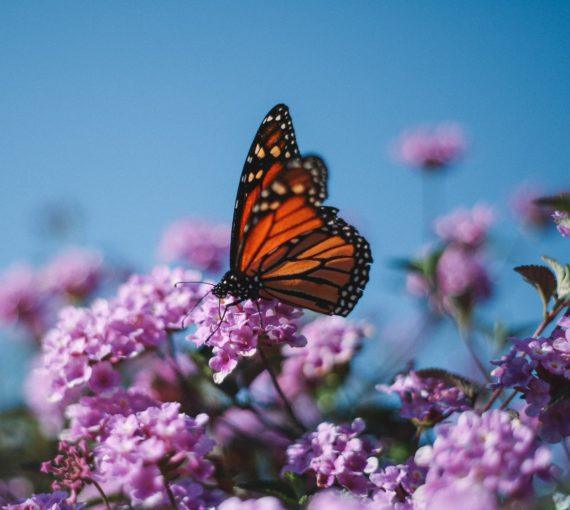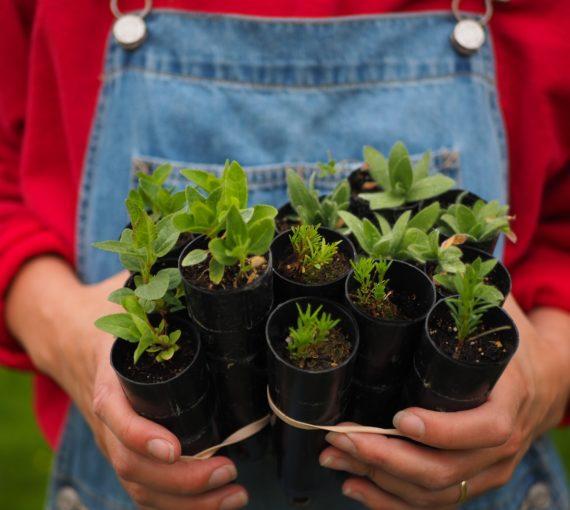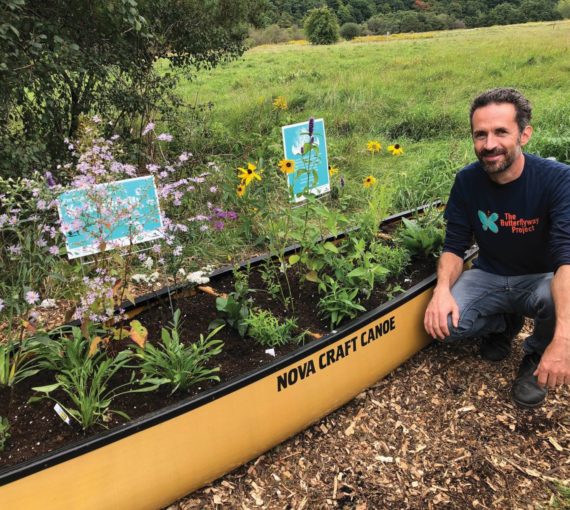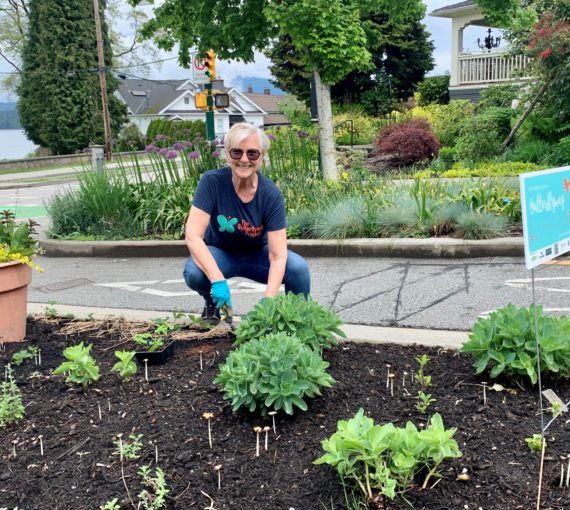
A Butterflies display shown at an elementary school. (Photo: Anita Lau Mitchell Elementary)
This year, more than 160 Butterflyway Rangers in British Columbia joined the David Suzuki Foundation’s Butterflies in My Backyard (BIMBY) project, a citizen science campaign hosted by the David Suzuki Foundation on the iNaturalist platform. They worked alongside UBC zoologist Michelle Tseng and UBC Botanical Garden associate director Tara Moreau to observe and collect data on B.C. butterflies. Their goal was to help find endangered and prevalent butterflies and better understand their relationship with native plants.
As the 2021 season wrapped up last month, BIMBY participants made 615 observations on iNaturalist. Together, they documented 47 butterfly species in Metro Vancouver.
Stephen Deedes-Vincke is a long-time Butterflyway Ranger and volunteer BIMBY project consultant. He said over 70 per cent of the observations met research grade because they were verified by at least two species experts on iNaturalist. But the most exciting finding was that BIMBY Butterflies’ data presented a 91 per cent match with the B.C. Endangered Species List. Explore Data from the Conservation Data Centre – Province of British Columbia (gov.bc.ca)
Some of the top endangered B.C. butterflies include the following:
- Johnson hairstreak
- Mormon metalmark
- West Coast lady (migrant butterfly from California)
Citizen science happens when scientists and researchers collaborate with non-scientists to advance our understanding of the world. For BIMBY, that is what took place when Michelle Tseng hosted the “Walker” initiative with assistance from UBC research student Alex Wong. Walkers volunteered to walk a set transect in their neighbourhood at least twice a month. These transects could be along native pollinator Butterflyway gardens or neighbourhood trails that are already filled with native pollinator plants. From May to October, 19 “Walkers” documented their findings. According to Tseng, a total of 150 transects were walked this year, with 775 butterflies and 20 species observed.
A total of 150 transects were walked this year, with 775 butterflies and 20 species observed.
Volunteer citizen scientists also shared their thoughts about being a part of this initiative. In the year-end survey, they listed their top three favourite things about the initiative:
- Walking and spending time around gardens.
- Watching the plants change over the season.
- Looking for bugs and being in nature.
Their top suggestion for next season centres on getting the “Walkers” together in a buddy system. As British Columbians navigated the reality of lingering COVID-19 and extreme climate change, observing and documenting butterflies under the BIMBY Butterflies Citizen Science Project became the perfect tool for participants to play their part in helping nature. The opportunity to turn this into a group walk would enhance the camaraderie of these butterfly lovers who want to help nature find its way to diversity and abundance.
According to E-Fauna BC, a biodiversity website run by the UBC geography department, there are around 184 local butterfly species in the province, the most diverse in the country. These butterflies face challenges from pesticide use by humans, climate change and habitat loss due to excess land development. But the most challenging obstacle they face is the lack of data about them. The David Suzuki Foundation’s Butterflies in My Backyard (BIMBY) began documenting local butterflies in the Lower Mainland in 2019. After two years of hard work, we are looking forward to 2022.

Join BIMBY in 2022
BIMBY 2022 will start recruitment on February 28. If you are interested in learning more about B.C. butterflies and want to play a part in our research, stay tuned for more registration information in February.


